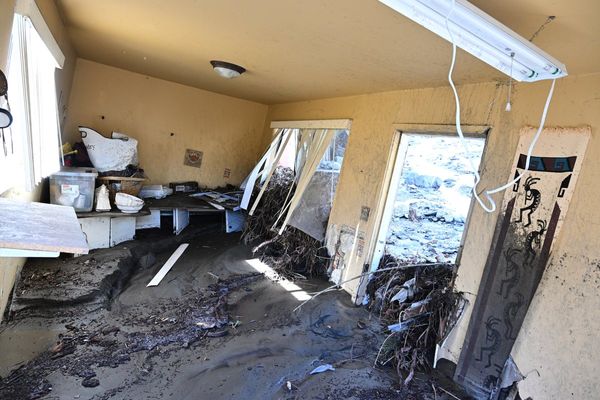
NAS, or Network Attached Storage, allows us to expand our storage space and store more data on a central storage device. NAS devices are centralised storage units connected to computers via a local area network or LAN, making it easy and efficient to store and access data like a local cloud for data storage.
NAS devices are popular with graphic designers, data collectors, and small businesses because they can be easily upgraded for more storage space. Many reputable brands such as QNAP, Netgear, Synology, Asustor, etc. offer NAS enclosures or complete NAS devices that can be customised according to requirements and needs.
However, when it comes to recovering data from a NAS, it becomes a dilemma instead. This is because a NAS is a complex storage unit consisting of a series of individual storage drives configured as a RAID or a single storage pool. In both configurations, NAS data recovery depends on a number of factors, which we will discuss in more detail in later sections.
In addition, each NAS device has built-in utilities that allow NAS recovery to be performed safely and without affecting data and folder structures. There is also third-party NAS data recovery software that can be used to recover deleted or lost files from NAS hard drives.
What Causes Data Loss in NAS?
Data loss in NAS devices can be a result of various internal and external factors. Here are some common causes of data loss in NAS:
- Controller Malfunction: Power surges, voltage fluctuations, and frequent power outages can cause the NAS controller to malfunction, resulting in inaccessibility of data.
- Improper RAID Rebuild: Improper RAID rebuilds in a NAS can cause overwriting of the existing data, leading to permanent data loss.
- Human Errors: Accidentally deleting files and folders from shared NAS folder, formatting NAS volume, incorrectly configuring RAID, or replacing failed drive/s can result in data loss.
- Firmware Issues: Firmware issues could make the NAS device inaccessible, causing data loss.
- File System Corruption: File system may get corrupt due to power failure during data write operations, malware attacks, etc.
- Multiple Drives Failure: In a RAID-based NAS if multiple drives fail, then the entire RAID configuration fails, leading to complete data loss.
Methods for performing NAS data recovery
Here are some methods you can use to recover lost or deleted data from a NAS drive.
Method 1: Recover deleted files from the shared recycle bin
Every NAS device has a shared recycle bin (if previously enabled) where deleted files are stored. If you accidentally deleted some files from a shared volume or folder, you can use this to recover them. The deleted files remain there for a certain period of time before being automatically deleted permanently. This period varies for each NAS device.
Method 2: Restore files with snapshots
Snapshots are an important feature of any NAS device, allowing you to create point-in-time snapshots or recovery points of volumes/partitions. This feature also allows you to create block-based snapshots of changed data, create regular snapshots with version management, and much more.
If you have lost data from your NAS device due to a ransomware attack or accidental deletion, you can recover it using snapshots.
Method 3: Restore files using cloud backups
Some NAS devices allow users to back up their entire NAS data to the cloud. This is very useful in the event of a complete NAS failure or permanent data loss due to permanent deletion, partition formatting, or failure of a member drive. The NAS management software regularly creates backups of system configurations, user settings, apps, files, and more. This backup can also be encrypted to add an extra layer of security. You can use the cloud backup to restore lost files, system configurations, or a single deleted file.
Method 4: Use third-party NAS data recovery software
The methods described above should help you recover lost NAS files and folders from your NAS device. However, they may vary depending on your NAS device. They are usually time-consuming and may result in inconsistent data recovery.
With Stellar Toolkit for Data Recovery, you can perform NAS data recovery quickly and easily. It is an advanced NAS data recovery software that is capable of recovering data lost from a NAS device under various circumstances, such as accidental deletion, volume formatting, drive failure, etc.
If you have a failed RAID-based NAS device, there is no need to worry. With this software, you can recover data from a RAID-based NAS. However, you should know the type of RAID configuration and the number of failed drives. For example, a RAID 5 array can withstand the failure of one drive, while a RAID 6 array can withstand the failure of two drives.
Conclusion
A NAS, or Network Attached Storage, is a central storage medium used by both individuals and businesses. These devices have various features such as snapshots, recycle bins, etc., which help to recover data if it has been accidentally deleted, the drive has been formatted, a drive has failed, and much more. If you have accidentally deleted some files or lost data from your NAS device, you can use the methods described above. You can also use NAS data recovery software such as Stellar Toolkit for Data Recovery to recover data from your NAS drive. It is easy-to-use DIY software that allows you to recover lost files and folders from a NAS without any hassle.







